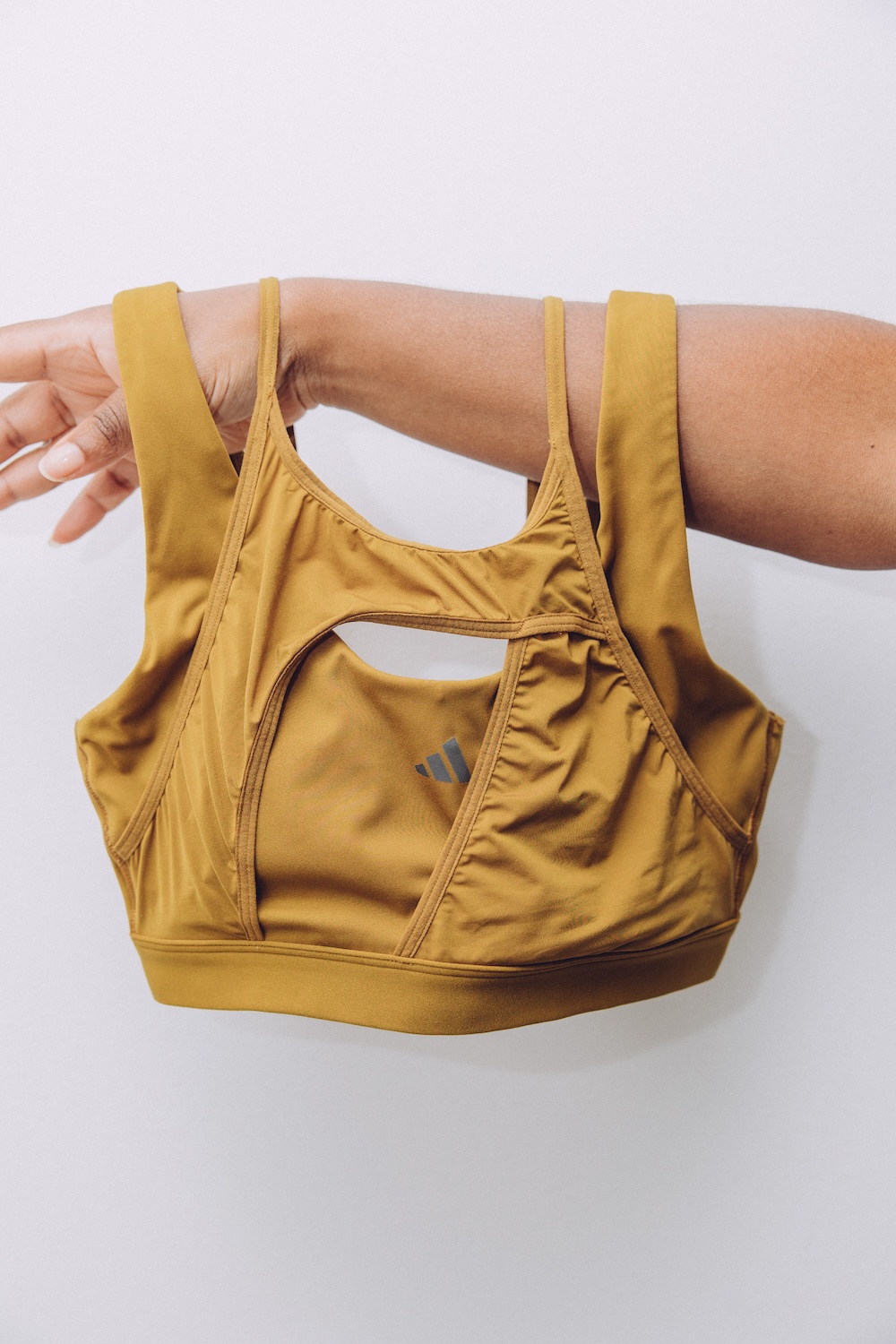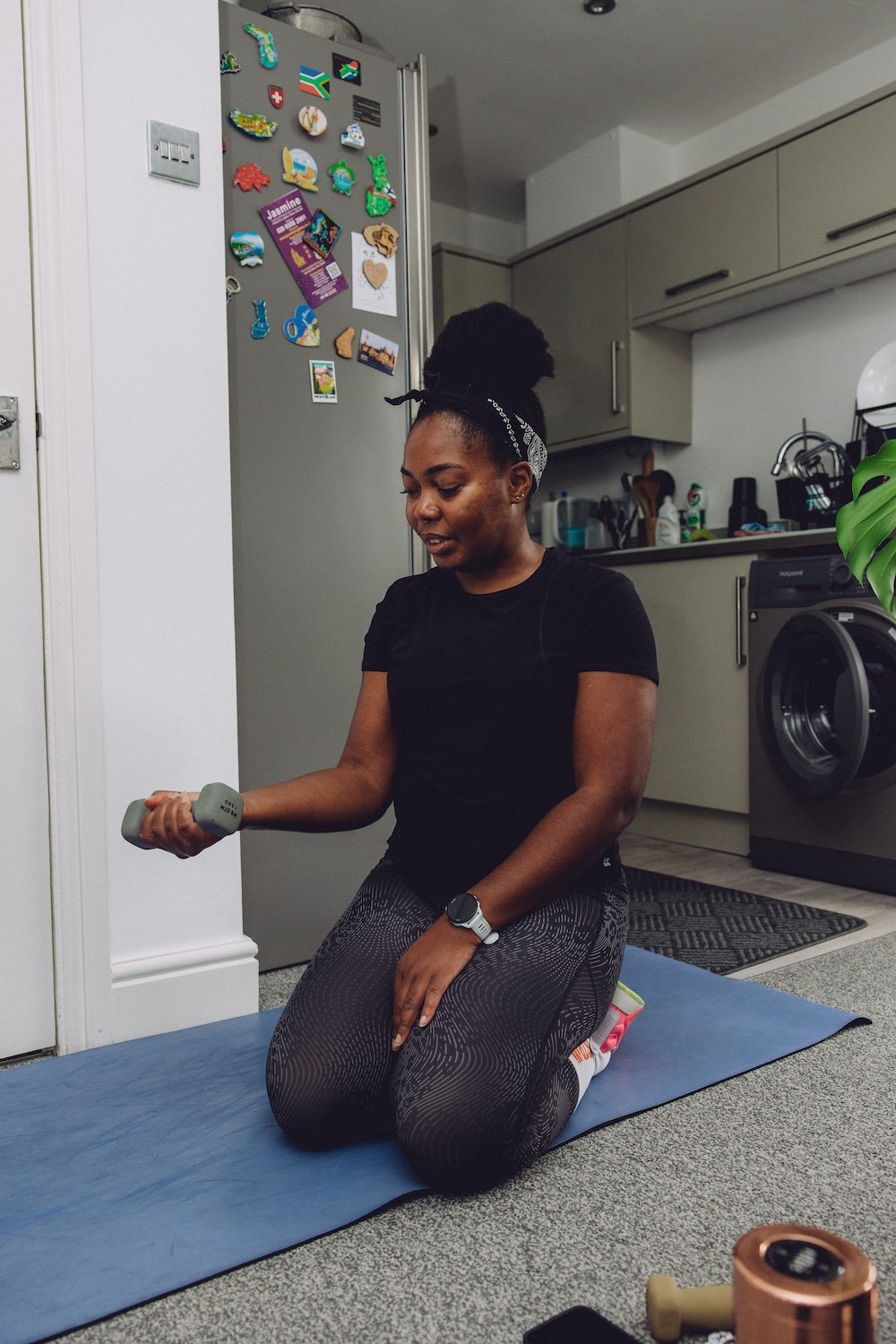
It wasn’t until I started suffering with tennis elbow symptoms that I, as a fitness professional and coach, started noticing an increasing number of individuals with the same issue.
And yes, it’s prevalent amongst people who play racquet sports like tennis and badminton, but that’s not the root cause of mine! I can tell ya though, when I first got symptoms, I went to play Padel and it most definitely did not help the situation.
Unfortunately, that’s meant I’ve not been able to play Padel for well over a year now despite having kitted myself out with all the cute outfits and padel shoes.
As usual, I spoke to our resident Sports Therapist and Osteopath, Modestas, to get some deeper insights and shed some light on lateral epicondylitis more commonly known as tennis elbow, and explore effective home remedies and exercises for its treatment.
What is Tennis Elbow?
Tennis elbow is a condition medically referred to as lateral epicondylitis. It usually involves degeneration and damage to the tendons that attach to the lateral epicondyle of the elbow joint. Specifically, the extensor carpi radialis brevis muscle is often affected, leading to pain on the outer part of the elbow.
While the condition is prevalent amongst tennis players, hence the name, it can also come about from general overuse and other repetitive motions of the wrist and forearm involved in various recreational activities and job tasks.
Personally, I think the discomfort and pain of tennis elbow on the outside of your elbow is unmistakeable. If you happen to find yourself with pain on the inner part of the elbow, you may instead have Golfer’s elbow aka medial epicondylitis.
Causes Of Tennis Elbow and Risk Factors
The primary cause of tennis elbow is the overuse of the forearm muscles, especially those involved in repetitive stress movements. Poor stroke technique in racquet sports can exacerbate the strain on the forearm tendons, leading to tiny tears in the injured tissue. Other factors include:
- Repetitive movements such as painting, typing, or using tools.
- Vigorous use of the forearm muscles without adequate rest.
- Improper equipment or techniques in sports and activities.
I don’t think I’ve truly figured out the root cause of my own tennis elbow, as I don’t think I got the chance to play enough padel to warrant a repetitive stress injury.
Symptoms of Tennis Elbow
Recognising the symptoms of tennis elbow is crucial for early intervention. Common signs include:
- Pain on the outer part of the elbow, which may radiate down the lower arm
- Weak grip strength, making it difficult to hold objects
- Discomfort during daily activities like lifting, writing, or shaking hands
- Tenderness and swelling around the lateral epicondyle
- A noticeable bony bump on the outer elbow or tendon in some cases
I definitely have good days and bad days with my symptoms depending I guess on how much stress I’ve placed on the respective muscles and joints. It did get to the point though where it had started to affect both arms and impacted my daily life too much.
Things as simple as lifting up to kettle to pour water became painful and uncomfortable. In the end it definitely motivated me to do something about it.
If you suspect you have tennis elbow, it’s important to consult a healthcare provider – like a Physiotherapist or Osteopath.
Alternative & Home Remedies for Tennis Elbow
After months of suffering, I finally started to make an effort with my rehab to help reduce the symptoms and associated discomfort. Managing tennis elbow at home can play an important role in easing discomfort and supporting the healing process.
My first option with any injury is of course nonsurgical treatments so I’m sharing everything I’ve tried and used here, to hopefully help you on the road to recovery too.
Rest, Ice, Compression, Elevation
One of the most effective approaches is the R.I.C.E. method (Rest, Ice, Compression, Elevation). Rest gives the injured tendon a chance to recover, while applying an ice pack or even rubbing an ice cube over the area for 15–20 minutes helps to reduce inflammation and numb the pain.
As mentioned, I’ve taken a (long) break from padel so far and avoided anything that felt like it aggravated my arm.
Using an elbow strap, brace, or compression bandage can take the strain off the tendons of the forearm and reduce discomfort during daily activities.
These supports limit the stress placed on the injured tissue, allowing the healing process to progress more effectively. Last but not least, elevating the arm when possible may help limit swelling.
I did opt not to try an elbow strap though as I felt this was masking the problem, more than fixing it. But I guess it’s a personal choice.
Massage Gun and Red Light Therapy
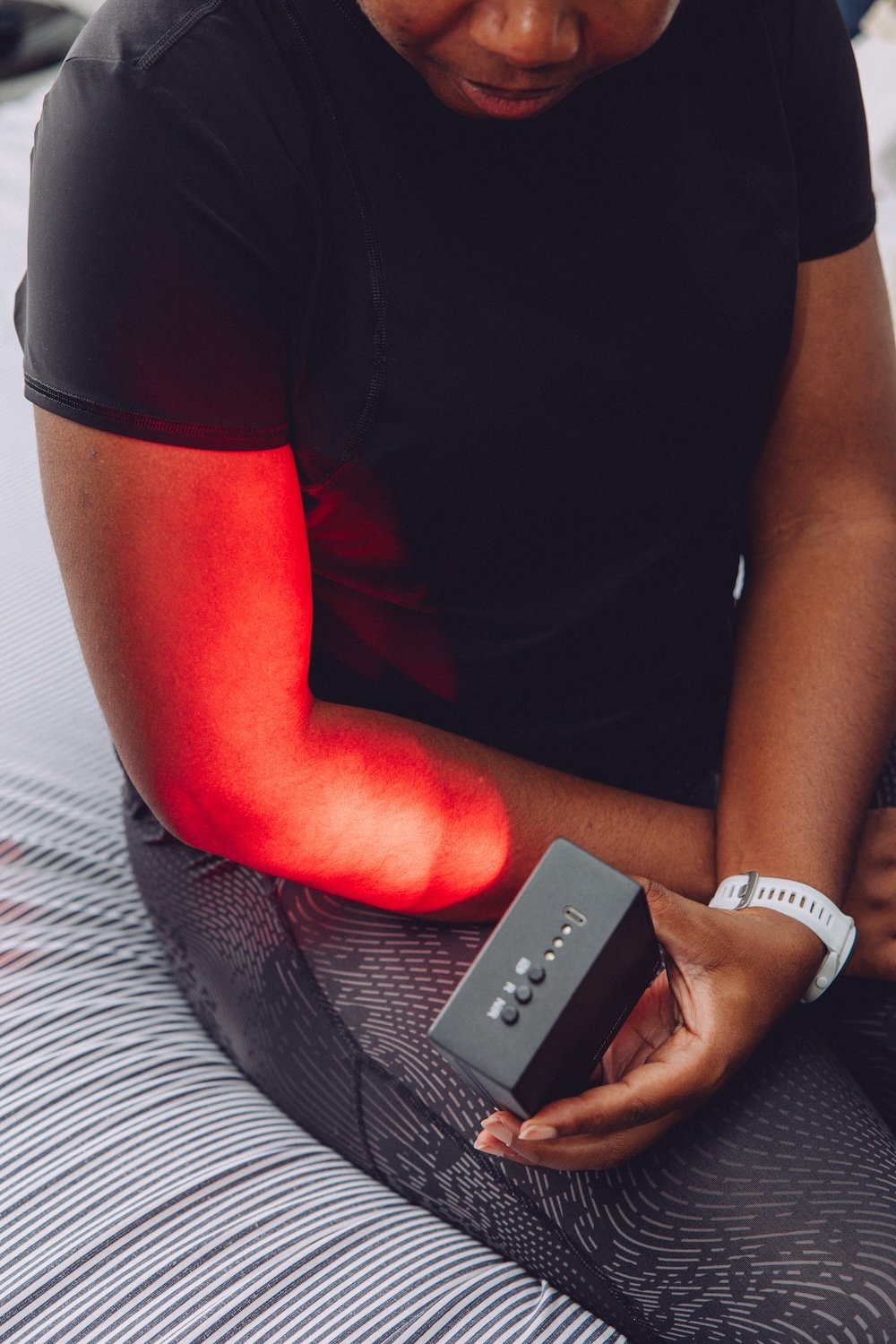
Some people also find benefit from additional recovery tools and two things I’ve tried – albeit not consistently – are a massage gun and red light therapy. A massage gun can ease muscle tension in the forearm muscles and improve blood flow to the area but does need to be used gently.
Red light therapy may help reduce inflammation and promote tissue repair in the injured tendons. When I remember, I use my red light device from Bon Charge for 10-20minutes before bed or when I just have a few spare minutes.
Both can be used alongside more traditional methods for added relief.
Gentle Stretching and Strengthening
Once the initial pain has eased, introducing gentle stretching and strengthening exercises is an important part of recovery. Stretches that target the extensor carpi radialis brevis and other muscles of your forearm can improve flexibility and restore function.
Gradual strengthening work also helps rebuild grip strength and prepares the forearm for a safe return to use / activity.
We’ll go into some stretches and exercises you can do below.
Occlusion Therapy
Another at-home option I tried is occlusion therapy, which involves using a muscle compression band to temporarily restrict blood flow during specific exercises.
This creates a hypoxic – ie reduced oxygen – environment in the muscle, which can stimulate healing and strength adaptations in the injured tendons without the need for heavy loads. When used carefully, it can be an effective way to rebuild strength and support the healing process.
Over-the-Counter Relief
For short-term management, non-prescription pain relievers such as NSAIDs can ease the pain of tennis elbow and reduce inflammation.
While these do not address the root cause, they can provide comfort and help you stay active while following a longer-term rehabilitation plan.
I’m not actually able to take NSAIDs due to stomach issues but I did buy myself a couple tubes of ibuprofen gel.
Exercises for Tennis Elbow Treatment
When it comes to exercises for tennis elbow, Modestas recommends focusing on strengthening the whole arm, not just the forearm. This means working on the flexors, extensors, biceps, triceps, and shoulder muscles to restore balance and stability around the elbow joint.
It’s also worth checking your wrist mobility — restricted movement here can put additional stress on the forearm tendons. Alongside strengthening, triceps release work can help ease tension in the upper arm and improve overall function.
Here are a few exercises you can implement into your fitness or daily routine to support your recovery, accelerate recovery and prevent recurrence:
Wrist Extension Stretch
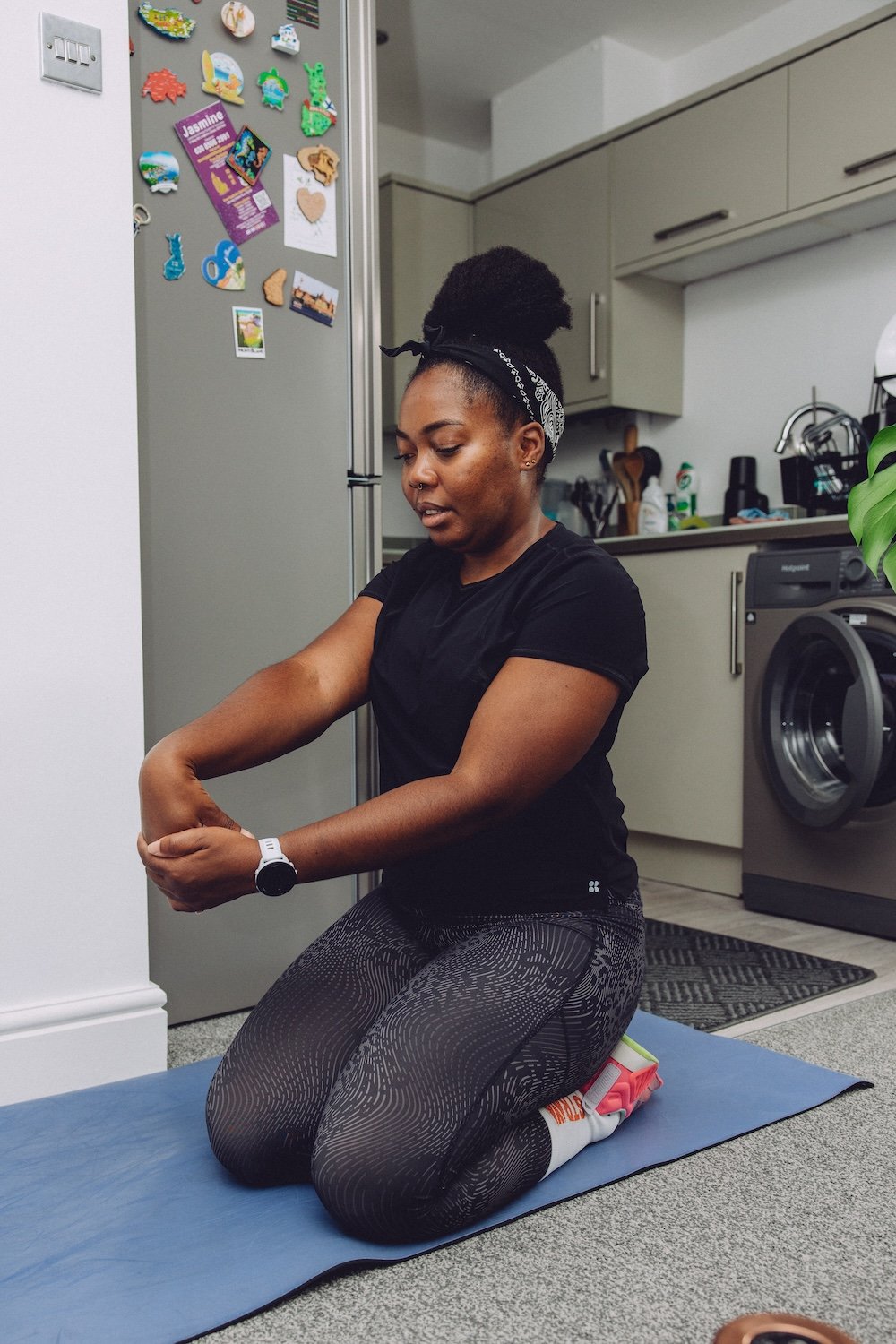
- Extend your arm with the palm facing down.
- Use your opposite hand to gently pull the fingers back towards your body.
- Hold for 30 seconds and repeat 3 times.
This stretch can also be done holding your hand in a fist.
Wrist Flexor Stretch
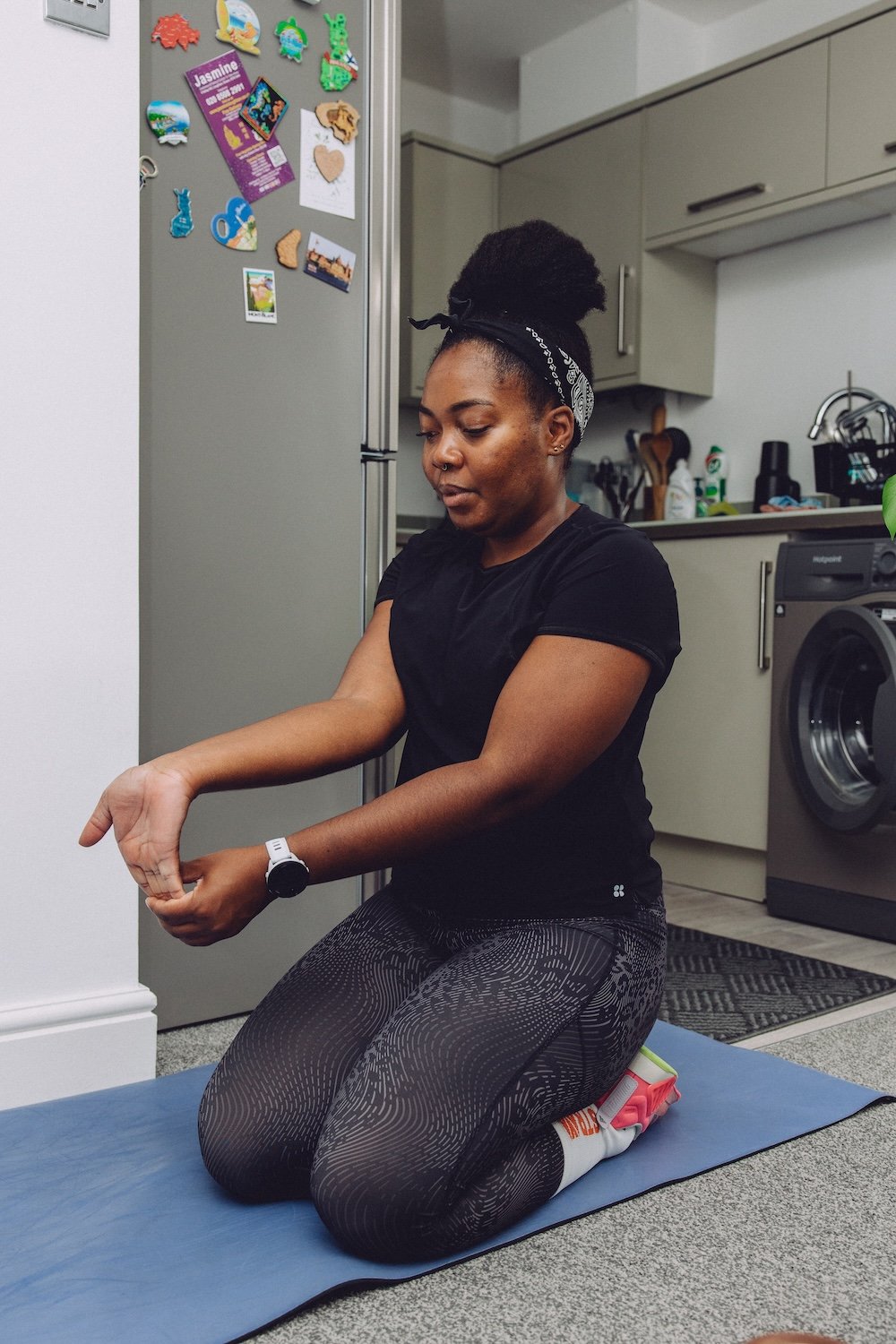
- Extend your arm with the palm facing up.
- Use your opposite hand to gently push the fingers down towards the floor.
- Hold for 30 seconds and repeat 3 times.
Forearm / Grip Strengthening with a Stress Ball
- Squeeze a stress ball to strengthen the forearm muscles.
- Perform 3 sets of 15-20 repetitions.
Eccentric Wrist Extension
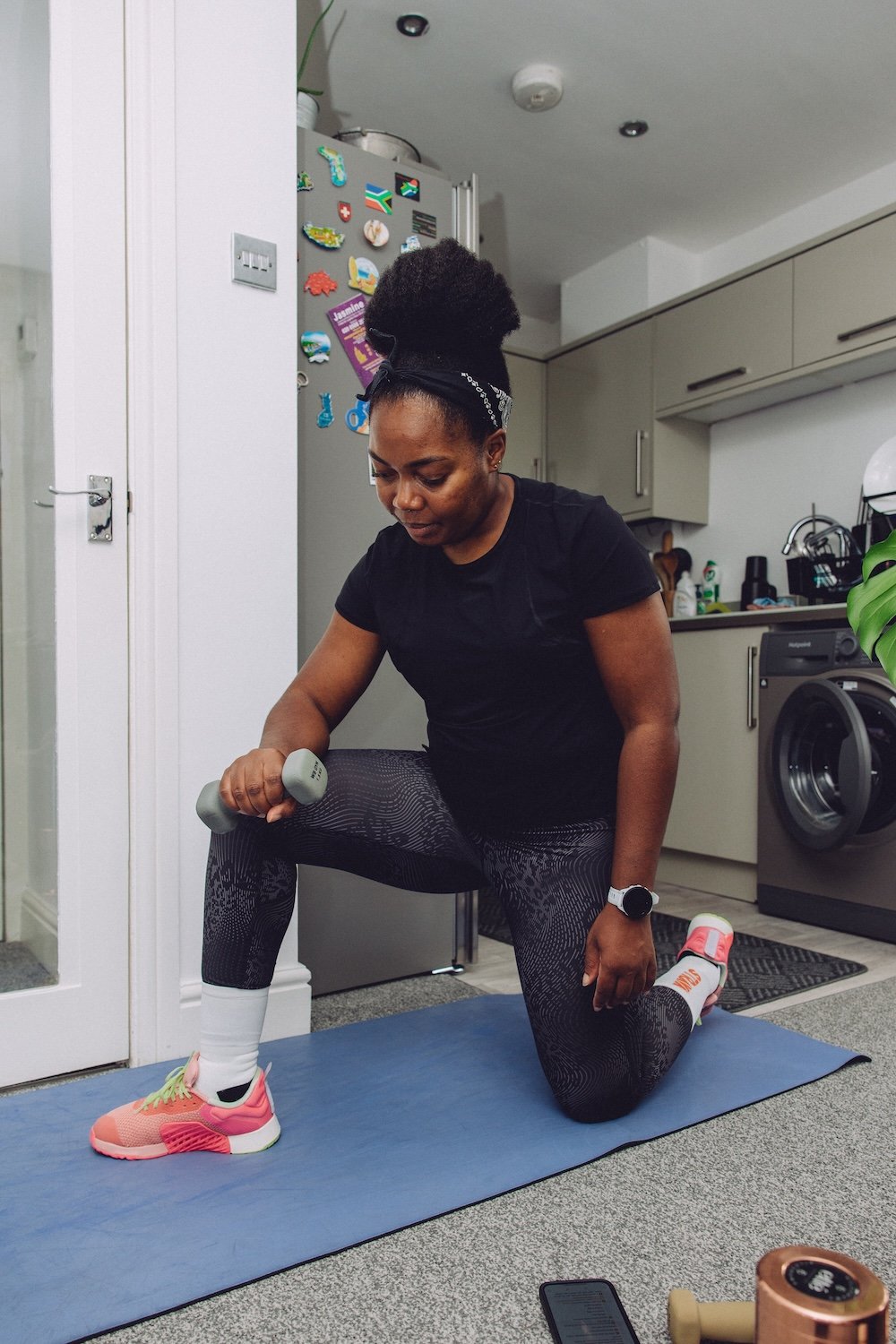
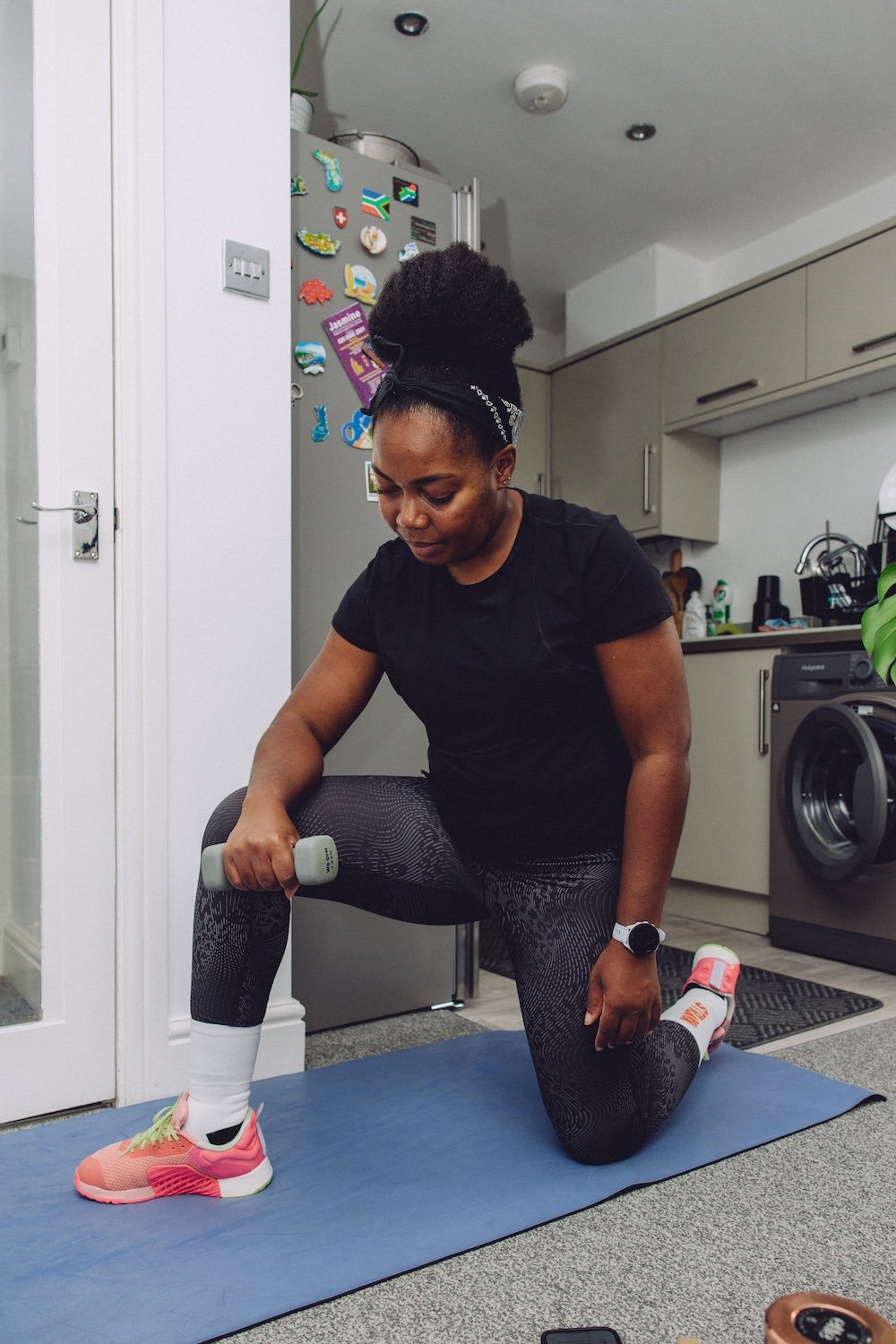
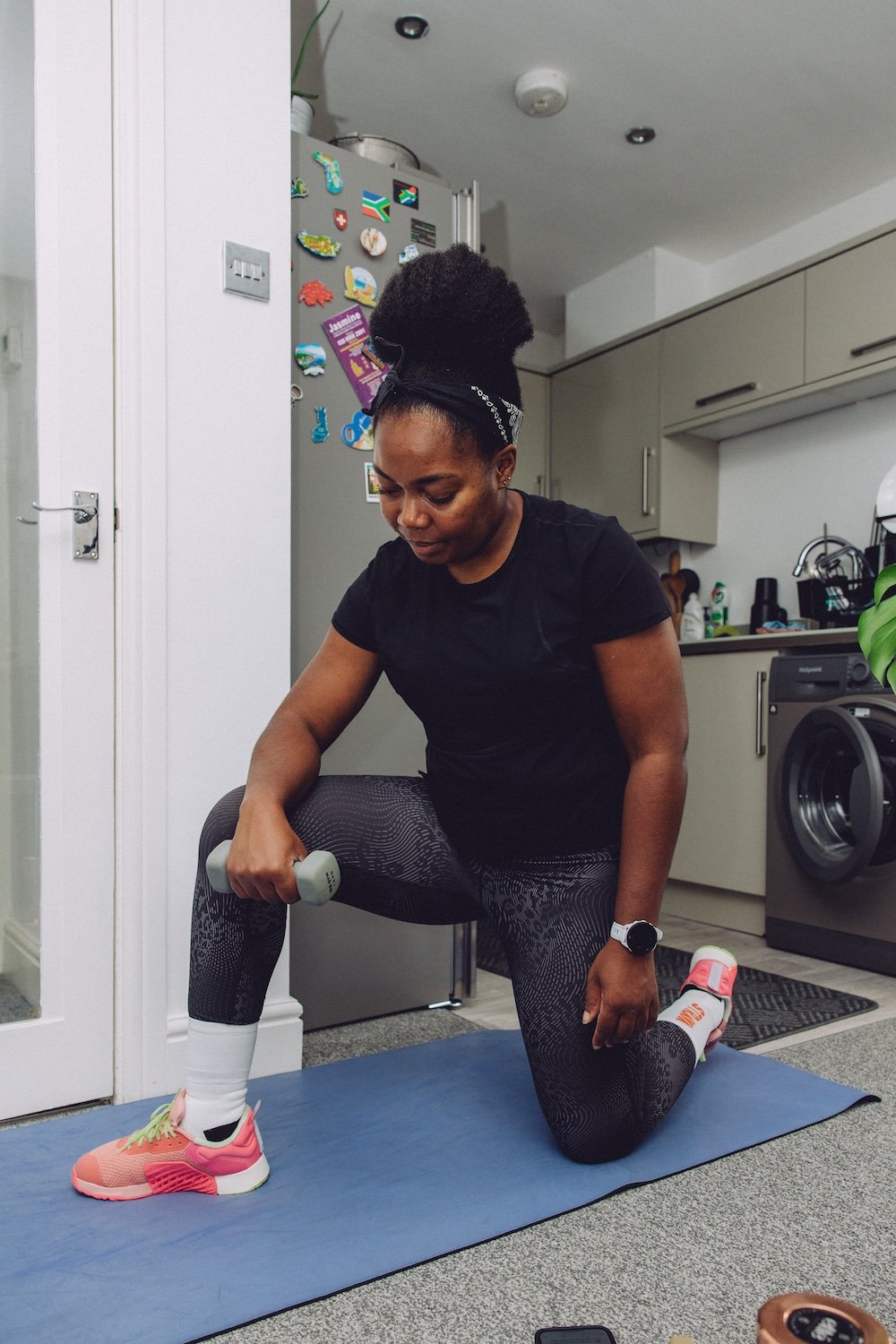
- Hold a light dumbbell with your palm facing down.
- Slowly lower the weight (i.e 5 seconds), then use your other hand to help lift it back up.
- Perform 3 sets of 10 repetitions.
Weighted Forearm Pronation & Supination
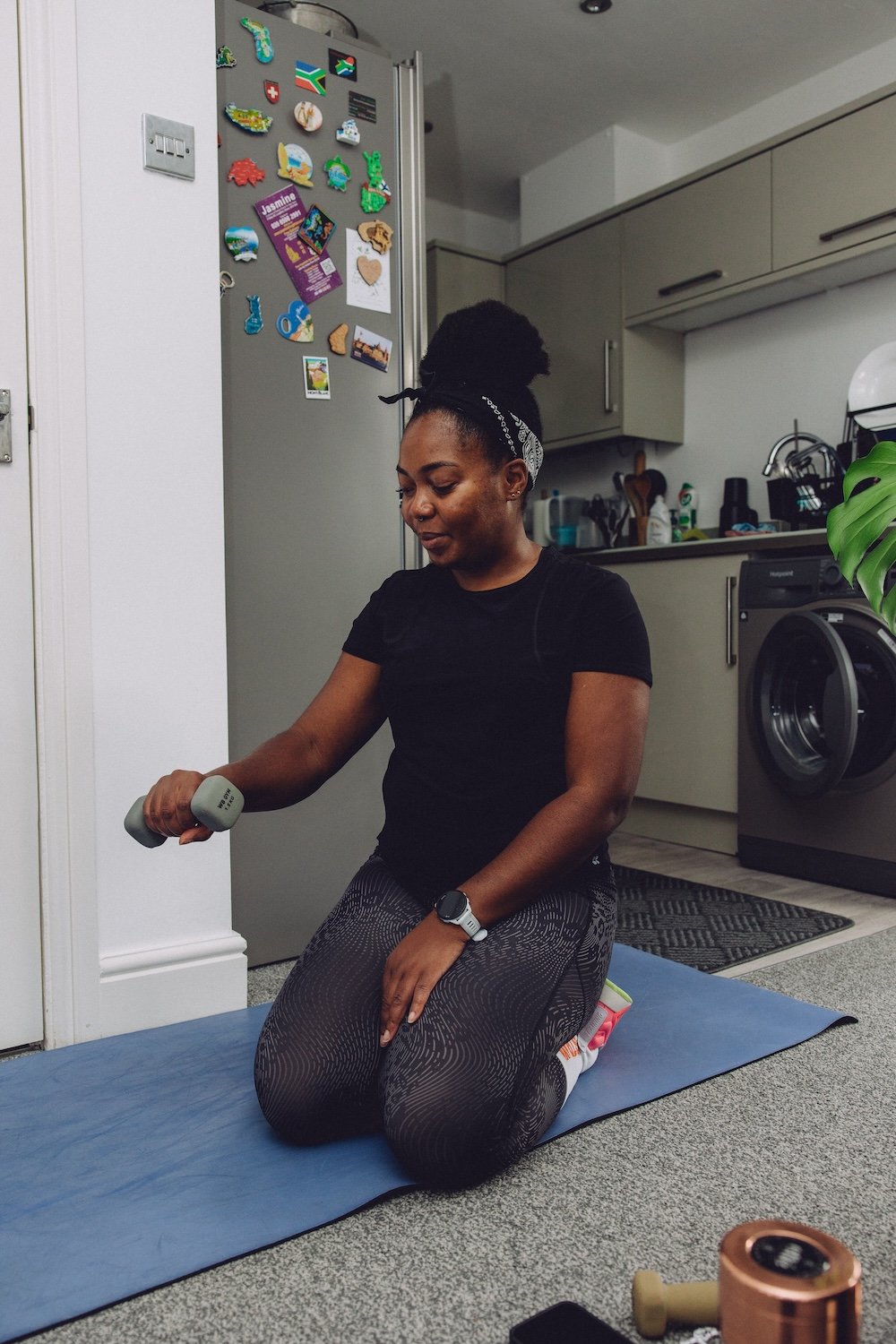
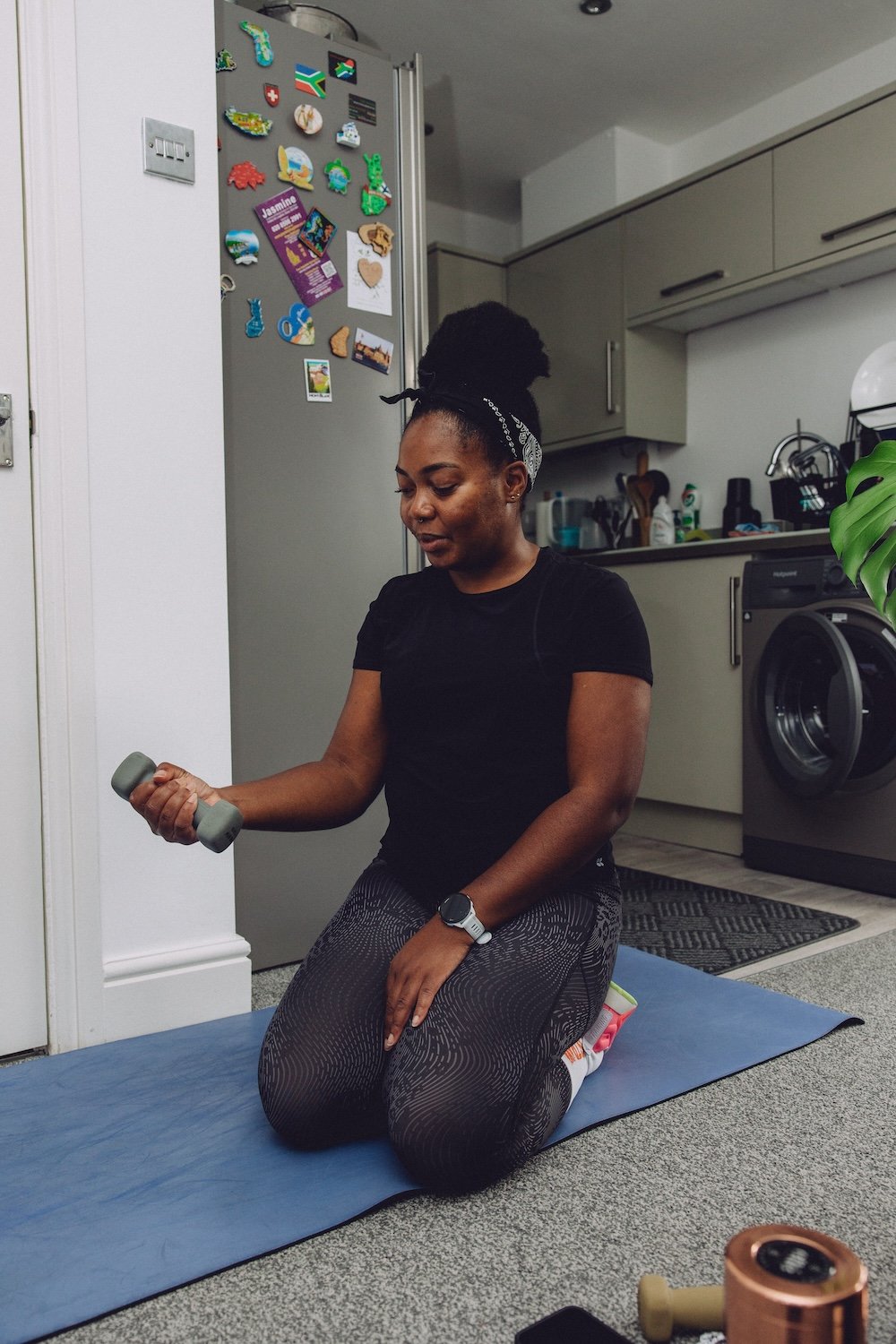
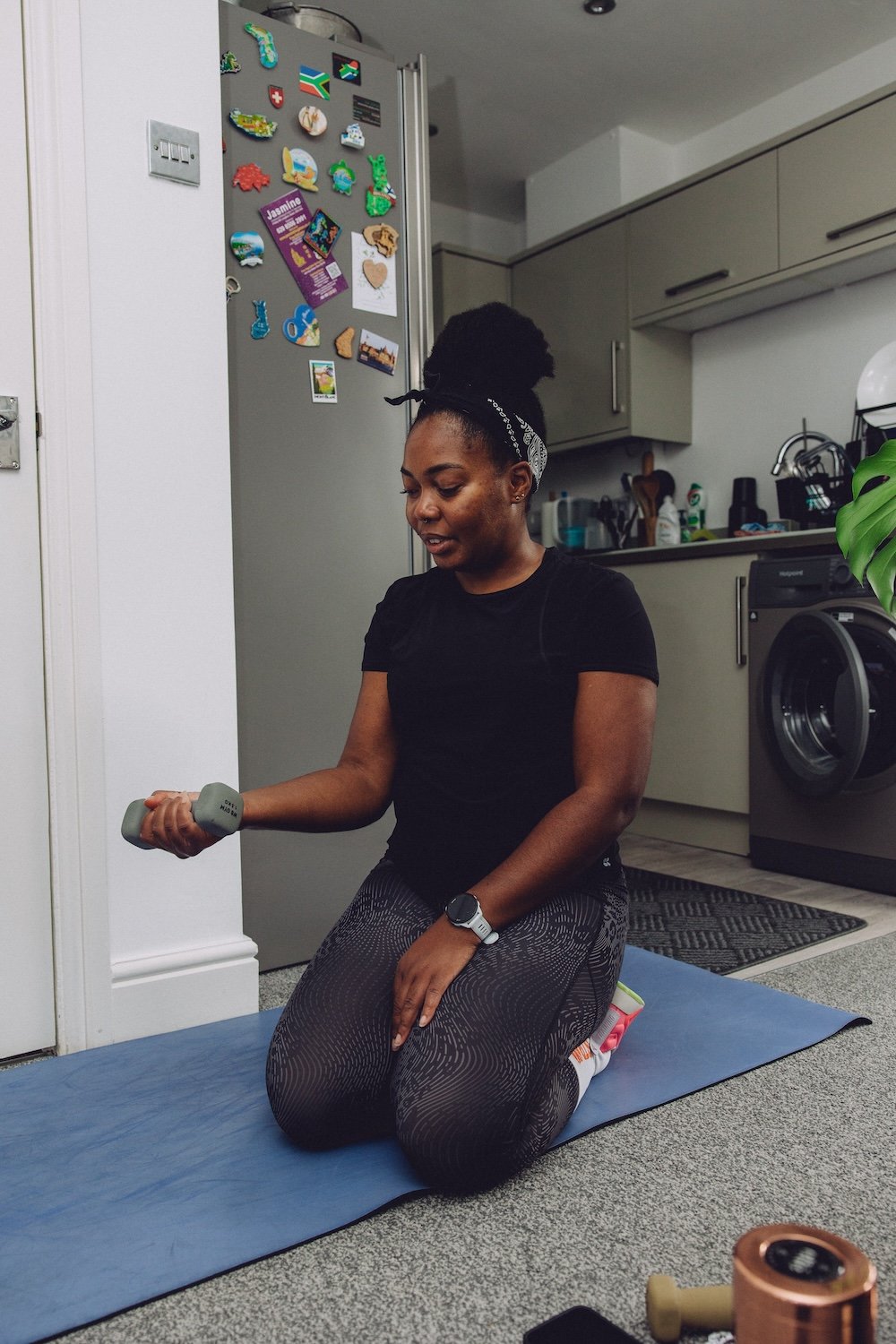
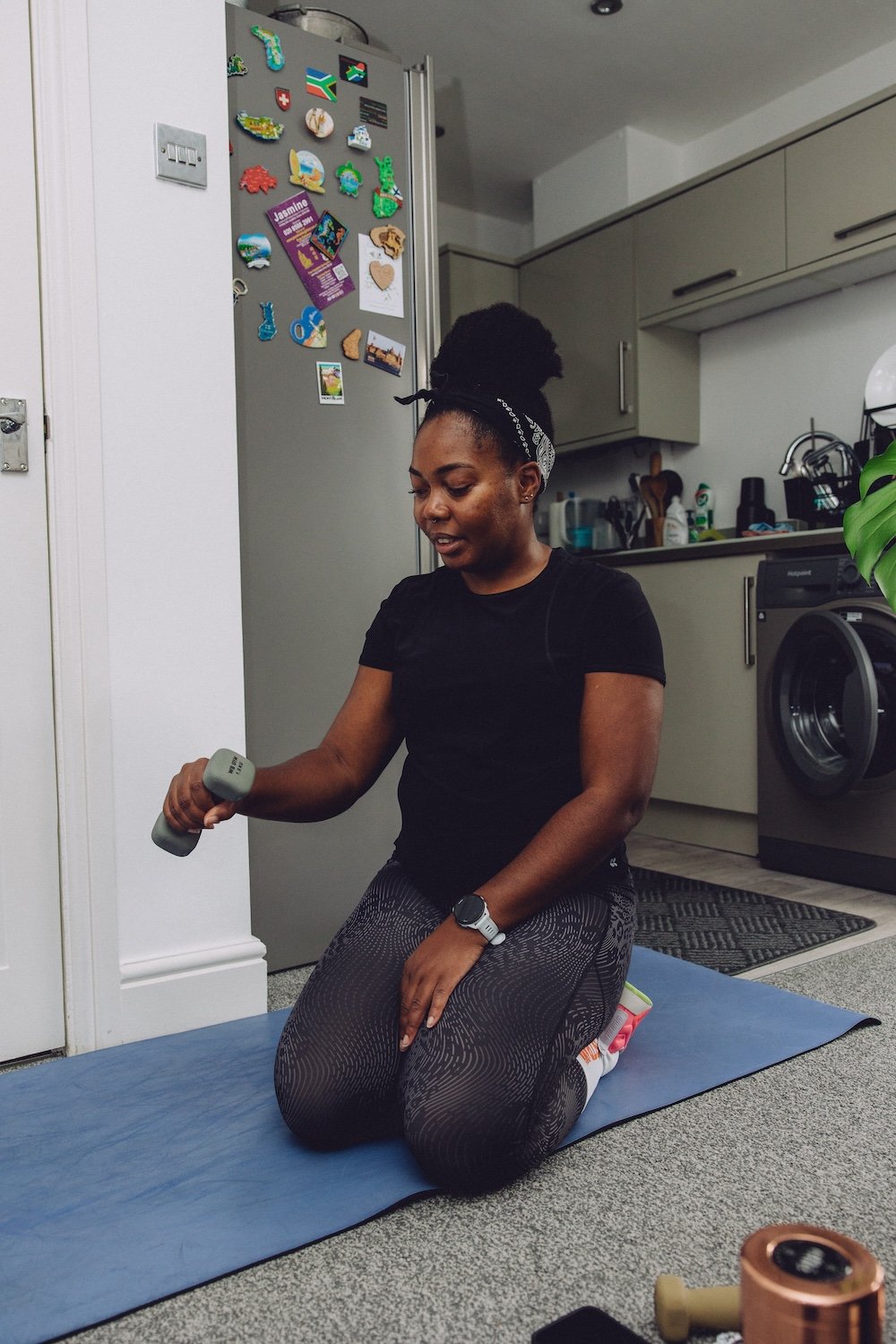
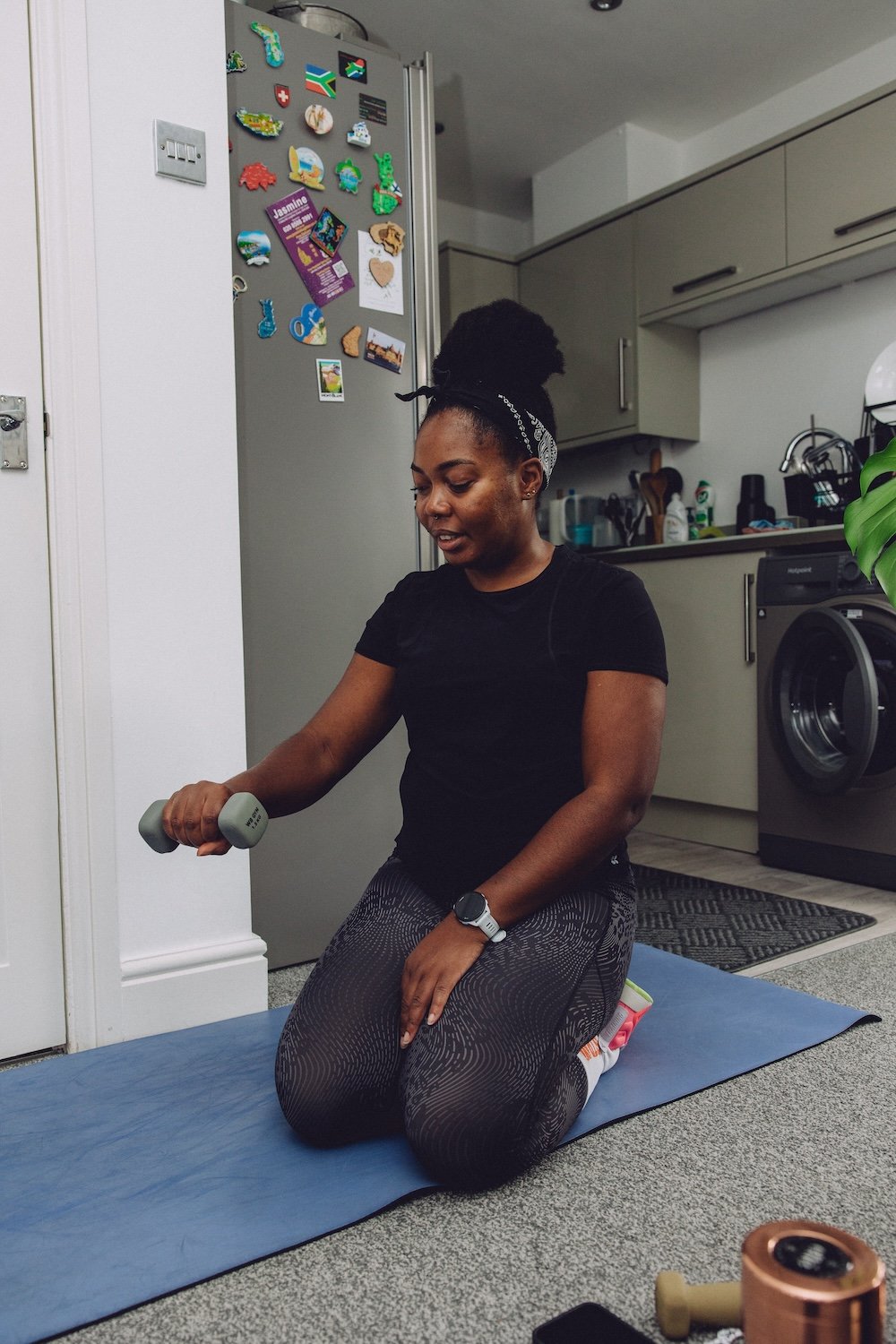
This helps restore rotational strength and control in the forearm and elbow joint.
- Hold a light dumbbell in one hand with your elbow bent at 90°.
- Slowly rotate your forearm so your palm faces up (supination), then down (pronation).
- Keep movements slow and controlled.
- Perform 10–15 reps in each direction, 2–3 sets.
This exercise can also be done on the floor or using a table to support the dumbbell which will allow you to use a heavier weight.
Overhead Triceps Stretch
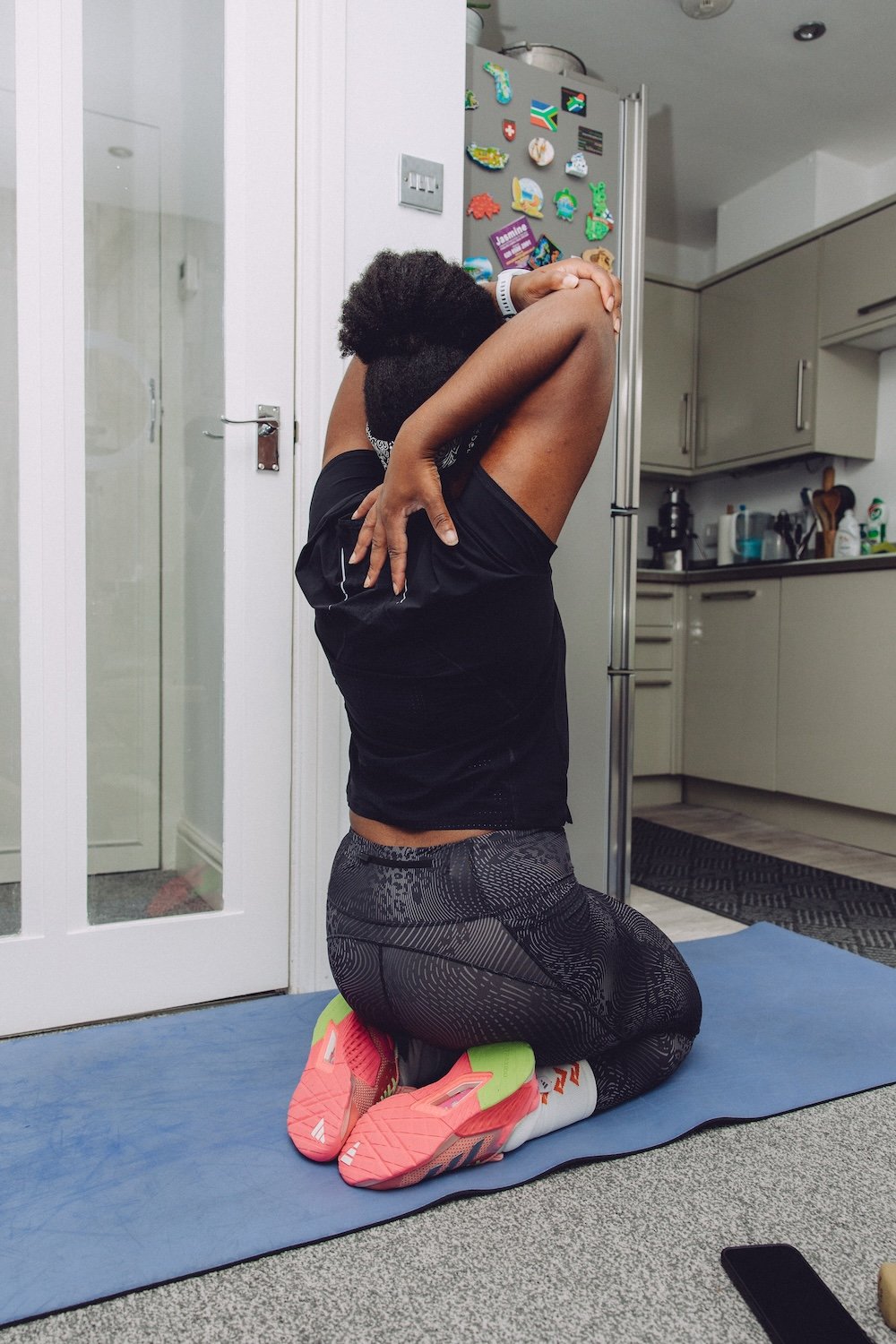
Releases tension through the upper arm and elbow joint, especially helpful if you’re compensating for forearm pain.
- Raise one arm overhead and bend your elbow so your hand drops behind your neck.
- Use your opposite hand to gently pull the bent elbow further behind your head.
- Hold for 30 seconds, switch sides, and repeat.
Preventing Tennis Elbow
The best way to deal with tennis elbow is to avoid it developing in the first place. Prevention focuses on building strength, improving technique, and being mindful of the small habits that can overload your forearm tendons.
Start by ensuring your equipment and technique are right for you. In racquet sports, for example, using the correct grip size and avoiding an improper stroke technique can significantly reduce stress on the lateral side of the elbow.
Similarly, if your job tasks or recreational activities involve repetitive movements, try to build in regular breaks and stretch your forearms throughout the day.
Strength and mobility also play a huge role. Regular strengthening exercises for the forearms, biceps, triceps, and shoulders help support the elbow joint and distribute load more evenly during movement. Combine this with gentle stretching to keep the muscles of your forearm flexible and ready for activity.
Finally, listen to your body. The first sign of discomfort is your cue to rest, adjust your load, and take care of the area before it becomes a painful condition. Early attention can prevent further injury and keep you active without interruption.
Tennis elbow can be a frustrating and sometimes stubborn injury, but with the right approach, recovery is absolutely possible. Understanding what causes it, addressing the inflammation of the tendons, and following a combination of home remedies and targeted exercises can make a huge difference in the healing process.
Whether you’re a fitness enthusiast, or someone whose daily activities involve repetitive motions, consistency and patience are key. Use the strategies and home remedies for tennis elbow in this guide – from rest and ice to occlusion therapy, massage, and progressive strengthening – to support recovery and help prevent it from returning.
If your tennis elbow pain doesn’t improve or worsens despite self-care, don’t hesitate to seek medical advice from a healthcare provider. In some cases of tennis elbow, more advanced medical treatments like physical therapy or platelet-rich plasma injections may be needed to support full recovery.
Take it step by step, look after your body, and remember that with time, care, and the right exercises, you can get back to doing what you love, pain-free – most of the time.
Elle
P.S Safety always comes first. If you are new to exercise ensure you seek advice from your GP. Make sure you drink plenty of fluids, wear appropriate clothing and carry out drills in a suitable space. Technique is paramount, and nothing should hurt. Should you experience pain, discomfort, nausea, dizziness, chest pain, shortness of breath etc, STOP and consult your GP.

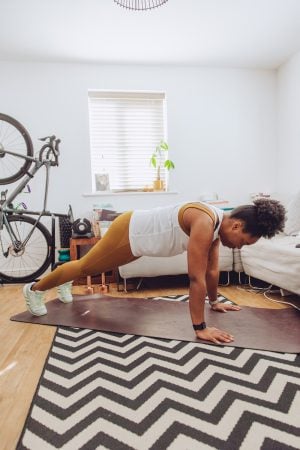
![3 Effective Exercises For Glute Activation [+Workout]](https://www.keepitsimpelle.com/wp-content/uploads/2020/11/good-morning.jpeg)
